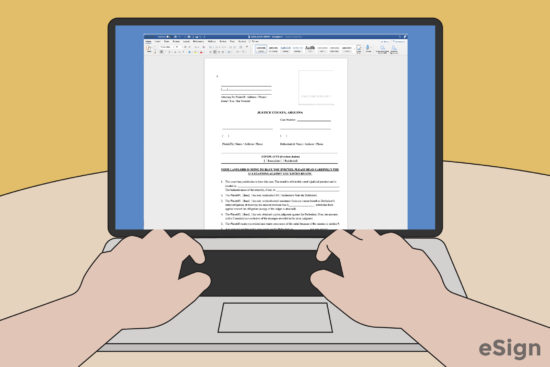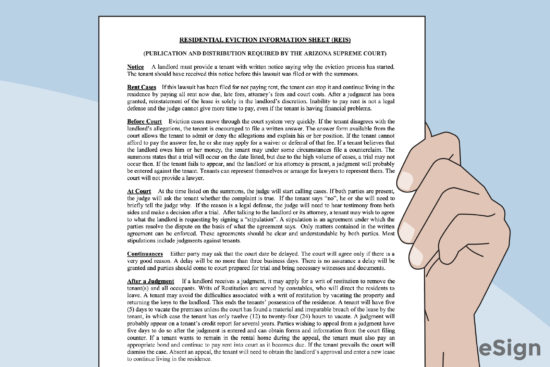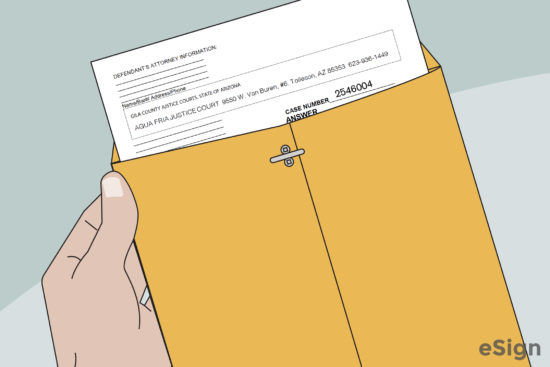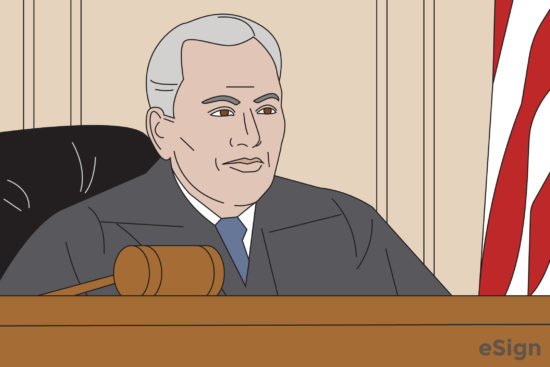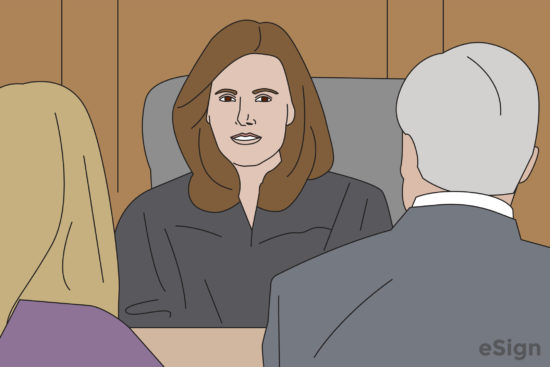Eviction Notices: By Type (6)
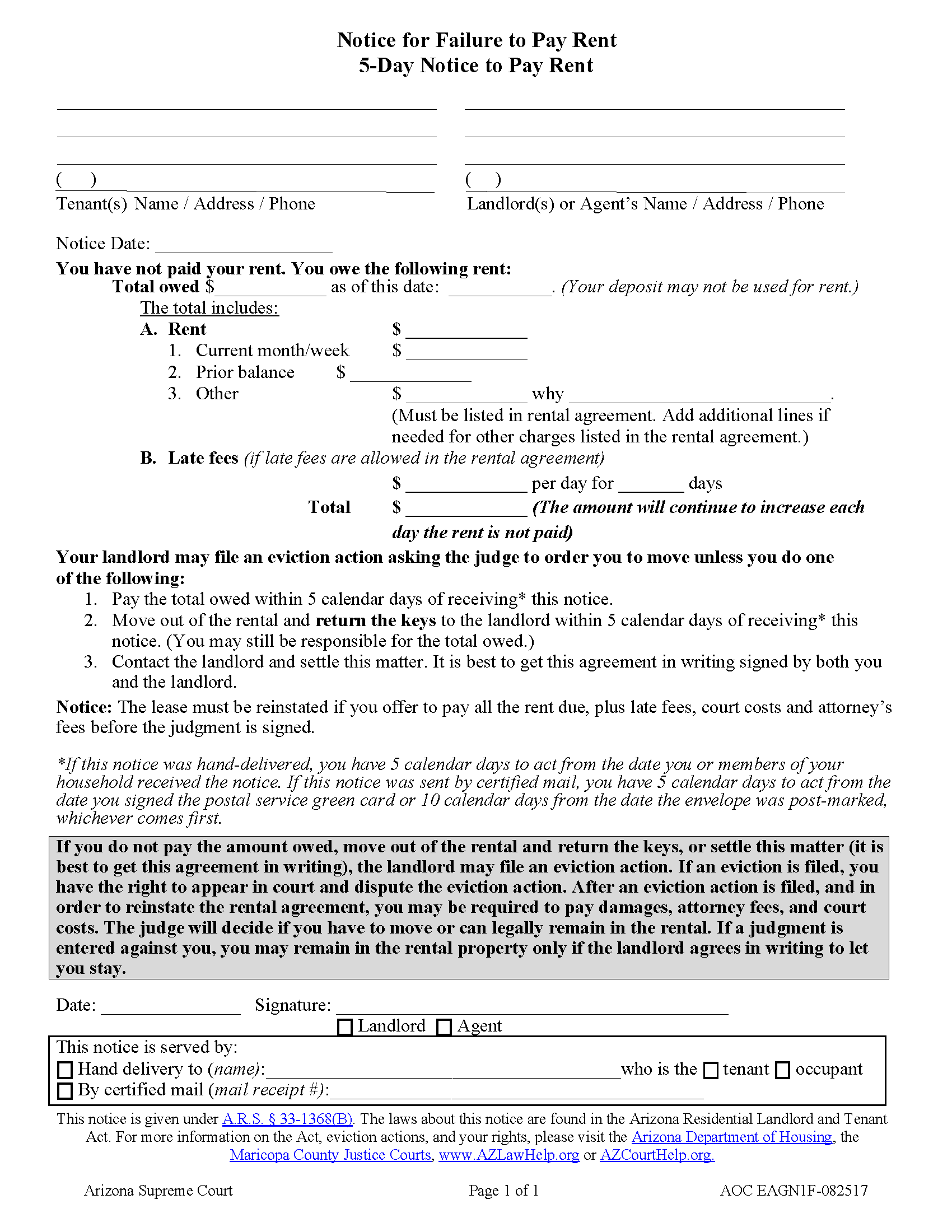
5-Day Notice to Quit | Non-Payment – Eviction notice demanding that a tenant pay all rent due or leave within five days of service or risk lease termination.
Download: PDF |
 Immediate Notice to Quit | Irreparable Breach – Terminates a tenancy immediately upon service from the landlord due to the tenant committing an illegal act or other irreparable breach. Immediate Notice to Quit | Irreparable Breach – Terminates a tenancy immediately upon service from the landlord due to the tenant committing an illegal act or other irreparable breach.
Download: PDF |
 5-Day Notice to Quit | Non-Compliance Affecting Health and Safety – This notice gives the tenant five days to remedy a health or safety violation they committed or move out. 5-Day Notice to Quit | Non-Compliance Affecting Health and Safety – This notice gives the tenant five days to remedy a health or safety violation they committed or move out.
Download: PDF |
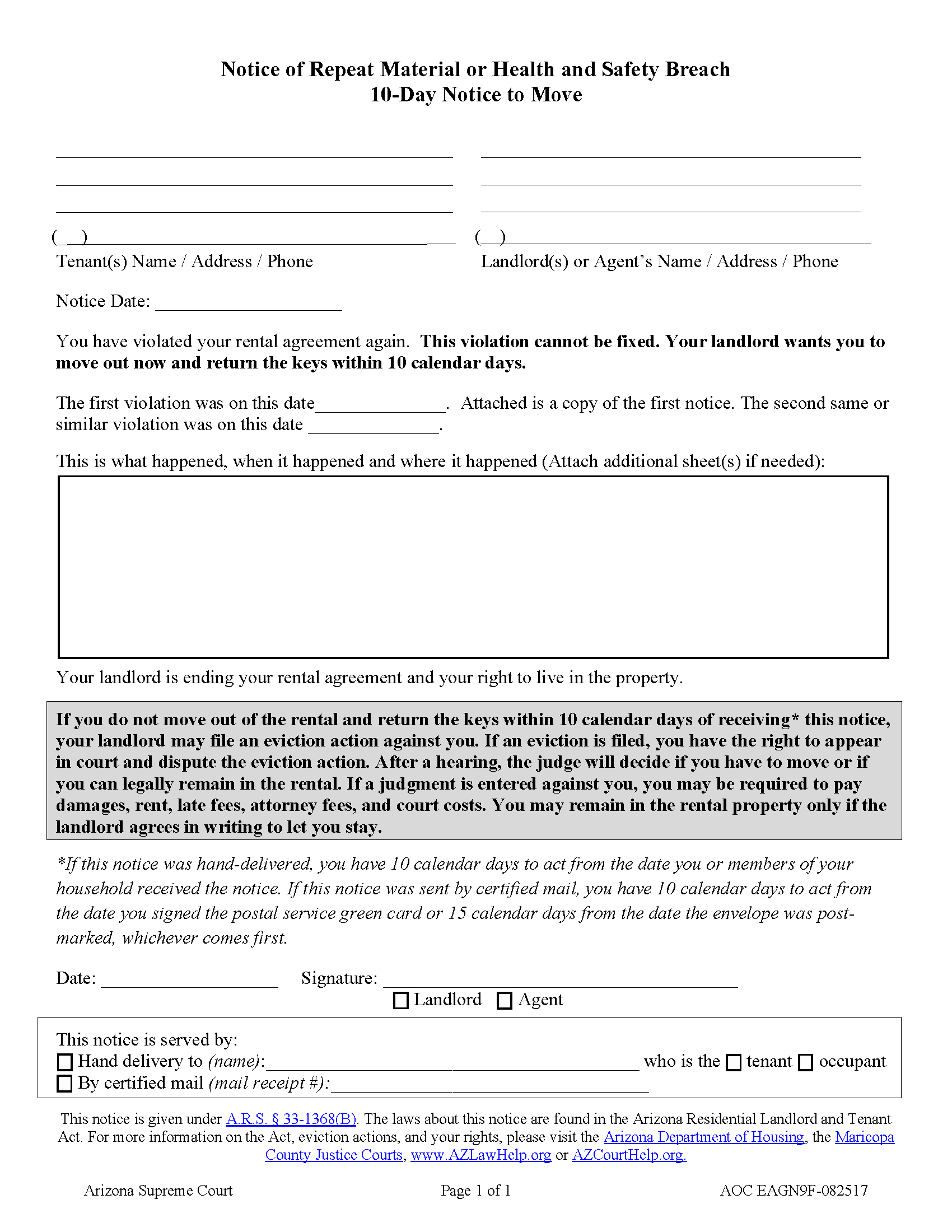 10-Day Notice to Quit | Non-Compliance Affecting Health and Safety – A notice demanding a tenant to hand over possession of the premises within 10 days because they have committed a second health and safety violation. 10-Day Notice to Quit | Non-Compliance Affecting Health and Safety – A notice demanding a tenant to hand over possession of the premises within 10 days because they have committed a second health and safety violation.
Download: PDF |
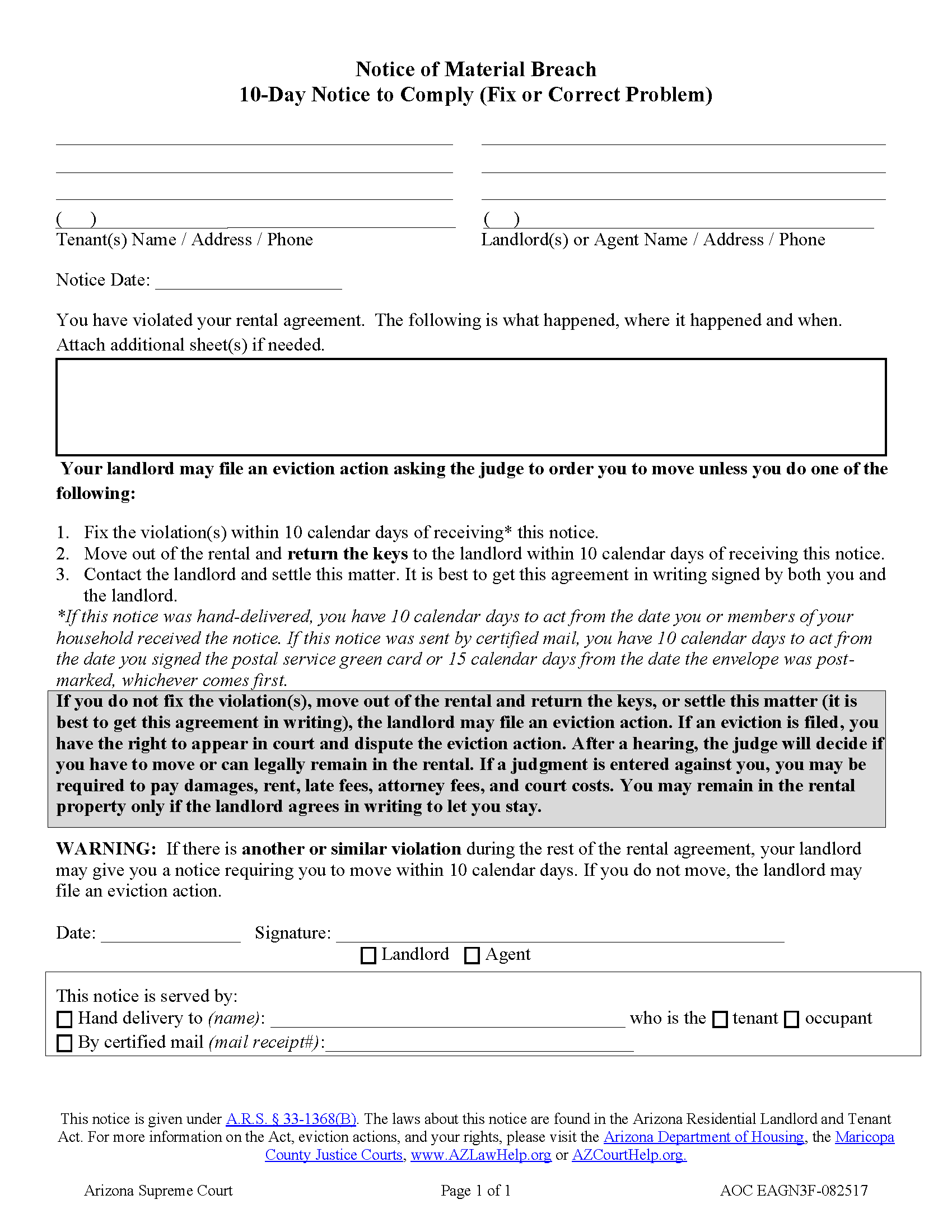 10-Day Notice to Quit | Material Non-Compliance – Informs a tenant that they have 10 days to cure a material non-compliance that they have caused or their lease will be terminated. 10-Day Notice to Quit | Material Non-Compliance – Informs a tenant that they have 10 days to cure a material non-compliance that they have caused or their lease will be terminated.
Download: PDF |
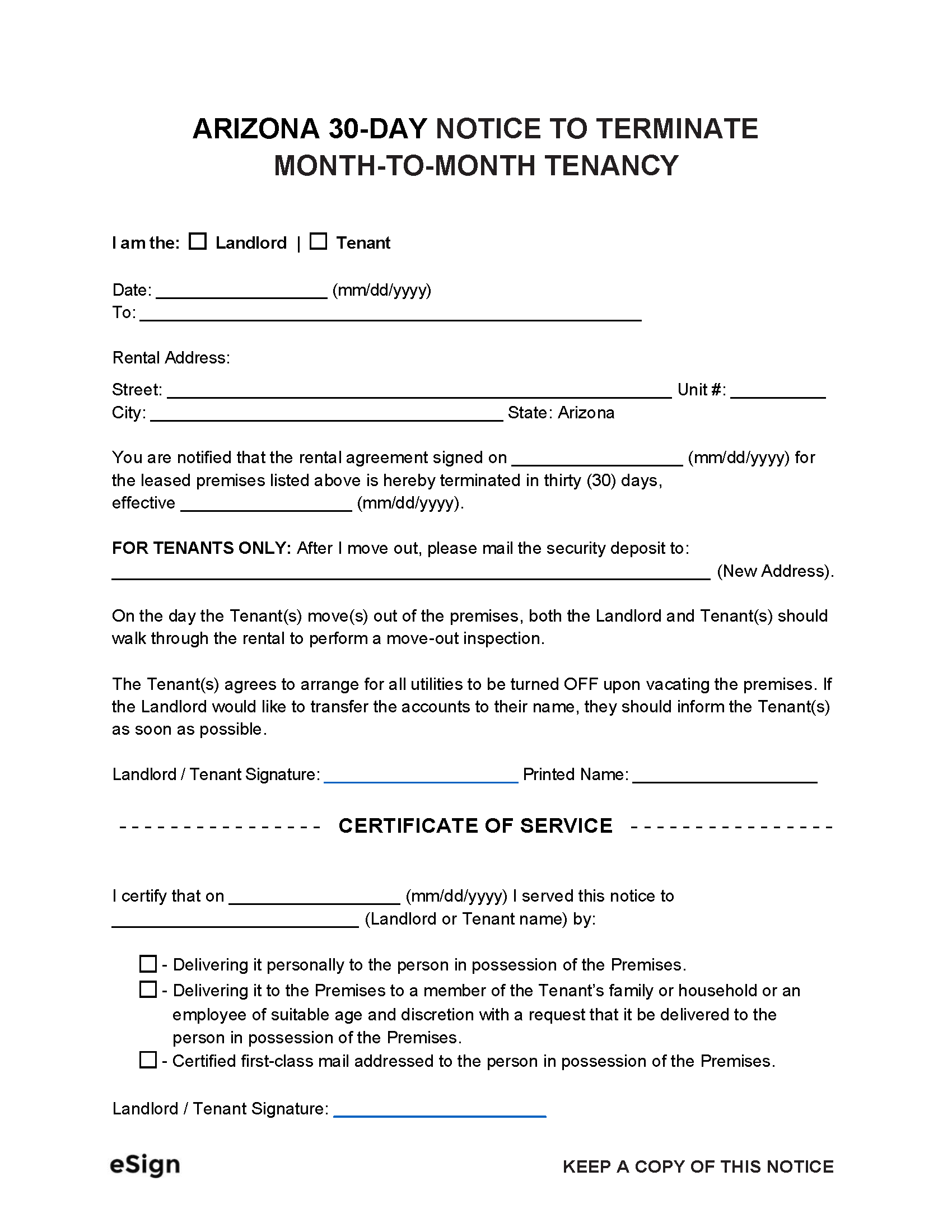 30-Day Notice to Terminate | Month-to-Month Lease – Terminates an at-will tenancy between a landlord and their tenant. (Can be used by either party.) 30-Day Notice to Terminate | Month-to-Month Lease – Terminates an at-will tenancy between a landlord and their tenant. (Can be used by either party.)
Download: PDF, Word (.docx), OpenDocument |
Notice Requirements
How to Evict a Tenant in Alaska
Step 1 – Serve Notice to Quit
A landlord must deliver one of the following notices to quit to their tenant before filing an eviction suit:
- Immediate Notice to Quit for Irreparable Breach
- 5-Day Notice to Quit for Non-Payment
- 5-Day Notice to Quit for Non-Compliance Affecting Health and Safety
- 10-Day Notice to Quit for Non-Compliance Affecting Health and Safety
- 10-Day Notice to Quit for Material Non-Compliance
- 30-Day Notice to Terminate Monthly Lease
Step 2 – Complaint and Summons
Step 3 – Serve the Tenant
- Complaint
- Summons
- Residential Eviction Information Sheet
- The portion of the lease relaying the violation
- A copy of the accounting of money owed (non-payment only)
Step 4 – Tenant’s Answer
Step 5 – Hearing
Step 6 – Trial (If Applicable)
Step 7 – Judgment and Writ of Restitution
Court Forms + Resources
Forms
- Answer to Eviction Action
- Signed by: Tenant
- Complaint
- Signed by: Landlord or Landlord’s Attorney
- Judgment
- Signed by: Justice of the Peace (Judge)
- Residential Eviction Information Sheet
- Signed by: N/A
- Summons
- Signed by: Justice of the Peace (Judge)
- Writ of Restitution
- Signed by: Justice of the Peace (Judge) and Constable/Sheriff
Resources



